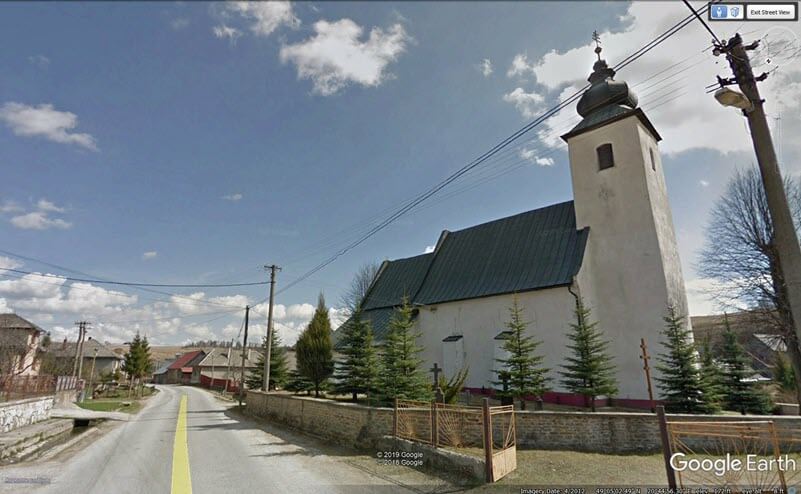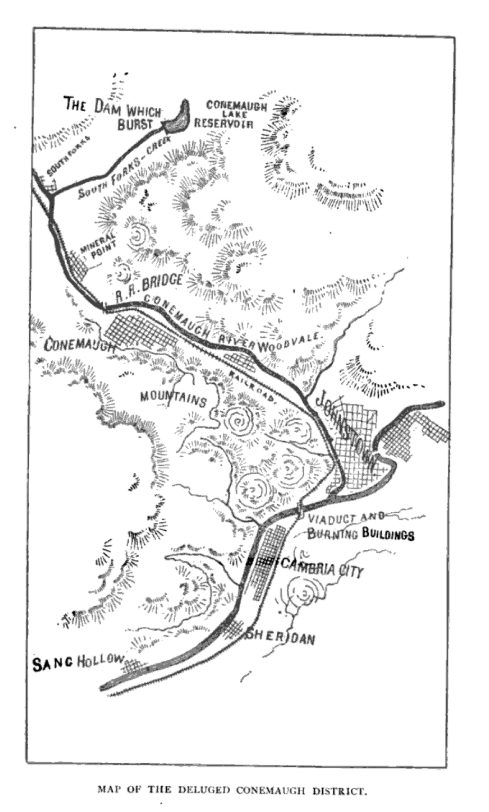by Lisa Cooke | Nov 22, 2013 | 01 What's New, Gifts, Inspiration
 Every year people ask me for great genealogy gift ideas, so this year I’m counting down to the holidays by sharing my own holiday list (in addition to the Black Friday specials announced yesterday). Every day for the next week I’ll post my top picks on several topics: The Essentials, Genealogy On-the-Go, Get Geeky, Get Organized and Find Everything, Heritage Home Decor and Genealogy Entertainment. I hope you’ll find some inspiration here, either for gift-giving or for things Santa might bring you.
Every year people ask me for great genealogy gift ideas, so this year I’m counting down to the holidays by sharing my own holiday list (in addition to the Black Friday specials announced yesterday). Every day for the next week I’ll post my top picks on several topics: The Essentials, Genealogy On-the-Go, Get Geeky, Get Organized and Find Everything, Heritage Home Decor and Genealogy Entertainment. I hope you’ll find some inspiration here, either for gift-giving or for things Santa might bring you.
This week: The Essentials. To shop, please click the links below: when you do, you support the free Genealogy Gems podcast. (Thanks!)
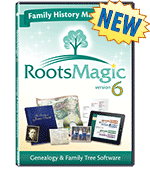 Online family tree services are great, but I’m a big fan of keeping your master family tree in software on your own computer. This makes updates and backups easier and leaves your important data in your control. RootsMagic 6 Family Tree Genealogy Software / Book Bundle
Online family tree services are great, but I’m a big fan of keeping your master family tree in software on your own computer. This makes updates and backups easier and leaves your important data in your control. RootsMagic 6 Family Tree Genealogy Software / Book Bundle is award-winning family tree software that I just love. It’s more than just a tool for organizing family tree data and sources, which are essential. RootsMagic also has powerful tools to help you share your research with others: tools for charts, reports and even your own book or e-book. Version 6 is for Windows 8/7/Vista/XP and 2000.
is award-winning family tree software that I just love. It’s more than just a tool for organizing family tree data and sources, which are essential. RootsMagic also has powerful tools to help you share your research with others: tools for charts, reports and even your own book or e-book. Version 6 is for Windows 8/7/Vista/XP and 2000.
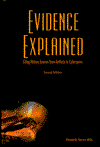 I’ve heard Evidence Explained:Citing History Sources from Artifacts to Cyberspace 2nd Edition
I’ve heard Evidence Explained:Citing History Sources from Artifacts to Cyberspace 2nd Edition described as the “genealogist’s bible.” It’s certainly one of the most important reference books you can have on your shelf. The opening chapters, “Fundamentals of Evidence Analysis” and “Fundamentals of Citation,” are a must-read periodically for genealogists who want to really understand how to interpret and cite sources. The rest of her book is a style manual to help readers cite every detail of a source in the right format. 885 page. PRICE: $59.95. Love the idea but overwhelmed by the length and price? Try her smaller-scale book, Evidence! Citation & Analysis for the Family Historian
described as the “genealogist’s bible.” It’s certainly one of the most important reference books you can have on your shelf. The opening chapters, “Fundamentals of Evidence Analysis” and “Fundamentals of Citation,” are a must-read periodically for genealogists who want to really understand how to interpret and cite sources. The rest of her book is a style manual to help readers cite every detail of a source in the right format. 885 page. PRICE: $59.95. Love the idea but overwhelmed by the length and price? Try her smaller-scale book, Evidence! Citation & Analysis for the Family Historian
now in its 16th printing. 124 pp, $19.95.
 The Genealogy Gems Premium Membership is possibly the best (and most fun!) bargain around for fun, up-to-date genealogy education, as I hope you Premium Members out there are already aware. This membership gives you Genealogy Gems Premium Podcast episodes with exclusive interviews, tips and content; unlimited access to the Genealogy Gems podcast archive with hundreds of hours of programming; and video classes on my most popular topics like Evernote, Google Earth for Genealogy, Google search strategies, organizing your research and more. PRICE: $29.95. Between Black Friday (11/29/13) and Cyber Monday (12/2/2013) you’ll get a bonus ebook!
The Genealogy Gems Premium Membership is possibly the best (and most fun!) bargain around for fun, up-to-date genealogy education, as I hope you Premium Members out there are already aware. This membership gives you Genealogy Gems Premium Podcast episodes with exclusive interviews, tips and content; unlimited access to the Genealogy Gems podcast archive with hundreds of hours of programming; and video classes on my most popular topics like Evernote, Google Earth for Genealogy, Google search strategies, organizing your research and more. PRICE: $29.95. Between Black Friday (11/29/13) and Cyber Monday (12/2/2013) you’ll get a bonus ebook!
by | Mar 18, 2014 | 01 What's New, Apps, Beginner, iPad, Smartphones, Technology
 Did you know your iPad or tablet computer can be one of your best genealogy buddies? It makes it easy to access and share family trees, documents, and photos on-the-go. It can even help you gather NEW family history treasures: images, interviews and more.
Did you know your iPad or tablet computer can be one of your best genealogy buddies? It makes it easy to access and share family trees, documents, and photos on-the-go. It can even help you gather NEW family history treasures: images, interviews and more.
However, iPads aren’t just miniature laptops. They work differently and in very specific ways, depending on what apps you have. If your tablet time has been limited to playing Angry Birds and checking your email, then it’s time to check out these 7 great ways to use a mobile device like an iPad for genealogy:
1. Access family trees
Access your online family tree (and even make changes) with apps like those from Ancestry, FamilySearch, MyHeritage and RootsMagic. Last we checked, Findmypast doesn’t have a mobile app, but its website is optimized for mobile devices (meaning it’s friendly to iPad users).
2. Take pictures
Snap digital images of old family documents, photos, memorabilia and artifacts when you visit relatives. From the iPad, you can upload and share them via Pinterest, Facebook, Instagram, email, or access them from your other computing devices via cloud-based storage such as Dropbox or iCloud. (Genealogy Gems Premium members may access the video tutorial, “A Genealogist’s Guide to Dropbox”).
3. Share your family history
Access old family pictures from your iPad to share with your relatives. You can put them right on your device’s hard drive, which makes them accessible even if you don’t have a wireless signal, but space on iPads is often limited. So make the most of your iPad’s ability to access cloud-based storage by putting your pictures in iCloud or on Dropbox.
4. Image new research finds
When you research your genealogy in libraries, use your iPad to take digital images instead of wasting time and money on photocopies. Image pages from a county or local history or take a snapshot (and a closeup) of a historical map. You can even take digital shots of microfilmed materials! Learn more here, and always get permission at each library before you start taking pictures.
5. Organize on your iPad
Keep track of all your genealogy sources with Evernote–and keep all your sources at your fingertips by using the Evernote app. My new Evernote for Genealogists Quick Research Guides, available both for Windows and Mac users, are cheat sheets that will help you start using Evernote immediately across multiple platforms.
6. Access podcasts, books and magazines on your iPad
Genealogy podcasts are the online equivalent of radio shows–all about family history! You’ll find tons of free, entertaining and informative content in:
Save genealogy and history e-books, magazines and pdfs to your iPad so you can read them anytime, anywhere. Click here for more on how to do this. What kinds of titles might you read? What about:
7. More tasks you can accomplish with your iPad
The best apps for genealogy are the ones that help you accomplish what you need to, not just the ones intended for family history use (like the free family history game Family House). For example, sometimes you need a quick magnifier and flashlight to better see old documents or photos–here’s a great app suggestion for that. Also, many of us find ourselves turning more frequently to YouTube. Well, there’s a YouTube app–click here for ideas on using it for genealogy.
 Resources
Resources
Genealogy Gems FREE e-newsletter. Subscribe to keep up to date with iPad/tablet developments other tech topics for genealogists!
Turn Your iPad into a Genealogy Powerhouse by Lisa Louise Cooke, with an in-depth look at over 65 apps, 32 fabulous tricks and tips to make you a power iPad user (and not just for genealogy!) and “see it for yourself” demos in recommended online videos. It’s available in print and e-book.
Genealogy on the Go with the iPad instructional video, recently updated and re-released for Genealogy Gems Premium members
Find Genealogy Apps with the FamilySearch App Gallery
Mobile Friendly Search Results Come to Google
The iPad, PC and Android Phone Can All Play Nicely Together for Genealogy
 Thank you for sharing this page with others who may want to use a tablet or iPad for genealogy.
Thank you for sharing this page with others who may want to use a tablet or iPad for genealogy.
by Lisa Cooke | Oct 1, 2014 | 01 What's New, Technology, Trees, YouTube
Recently I heard from David with this question:
“Because of your consistent message of starting a family blog [and] anecdotal success from listeners, I started a family history website. A blog just seemed too small…. The ultimate goal is to display the family information for my known relatives as well as create a site that will pop up on Google search results and hopefully put me in contact with new relatives.
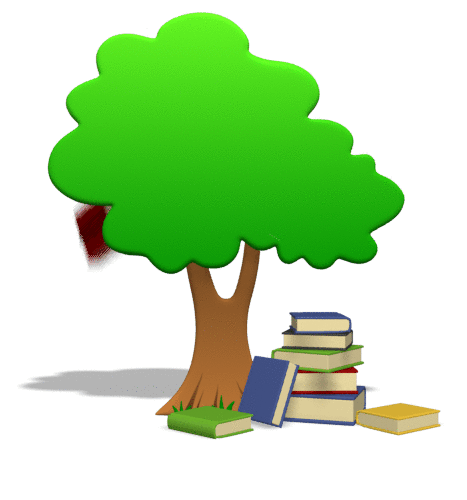
My question is about displaying the family tree on the website. I want to have a page that shows my family tree. I did not know how to accomplish that, so I decided to include links to my ancestry and myheritage family trees. The problem with this method is that ancestry requires you to have an account to view the tree, and MyHeritage only shows you some of the family tree and requires an account to view the rest. This is not a great method to share the family tree with relatives because not everyone has, or wants, an account with these sites. Is there a website where I can upload my family tree’s GEDCOM file and then link to it on my website where it will display all the members of my tree?”
It’s always great to hear that Genealogy Gems is helping out. Congrats on the website David! I  recommend blogs to my readers because they are quicker and easier to set up, but in reality I would rather recommend they create a family history website like you are doing. It’s better suited for the long haul of getting your word out and connecting with others.
recommend blogs to my readers because they are quicker and easier to set up, but in reality I would rather recommend they create a family history website like you are doing. It’s better suited for the long haul of getting your word out and connecting with others.
You pose a great question, and so I did what I just coached everyone in my latest episode #171 to do: just Google it! What you are describing is a ‘website plugin’ so I Googled: family tree website plugin and…Ta-da! There are some out there.
I found one for Word Press (which is where I build my site) so I may have to give that one a try. However, since you are using Weebly I went back and added “weebly” to the search and there are definitely some hits there, though I’m not sure if they specifically include a visual tree plug in. Try the searches and see if you find something you like.
My friend Caroline Pointer has a YouTube video called “Build a Family History Website & Blog on Weebly.” Around the 5:50 mark she shows how she embedded family tree charts into Weebly. Looks like she used Scribd.
Keep up the great work on your family history site!
by Lisa Cooke | Oct 1, 2019 | 01 What's New, Brick Wall |
Podcasts are hotter than ever. Folks listen while doing a wide range of activities: working, exercising, commuting, cooking or simply relaxing.
My hope is that as you listen to the free Genealogy Gems Podcast (and the ad-free Genealogy Gems Premium Podcast to which our members have exclusive access) you’ll not only listen, but put into action the ideas and strategies that you hear.
That’s why it’s so rewarding when a listener takes the time to write and let me know what they accomplished using the techniques they heard about on the show or in our videos.
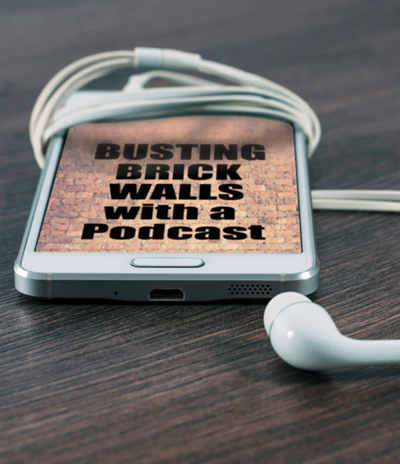
Busting Genealogy Brick Walls
But can a podcast help you bust a genealogical brick wall? Well, according to listener and Genealogy Gems Premium member Natalie Zett, you bet they can! With Natalie’s permission I want to share her email with you today because I believe it will not only inspire you, but it also provides an excellent example of how to apply what you hear.
“Hi Lisa Louise and the Genealogy Gems Gang –
As a long-time listener and Premium Subscriber, I recently put everything I’ve learned from you to the test!
I’ve traced most of my direct ancestors back to the 1500s–and have a fairly complete family tree. So, I figured that there weren’t any BIG things left to discover.
Then, a few months ago, I searched my father’s surname, “Zett,” among my Ancestry.com (DNA) matches, fully expecting to see family members that I already knew. I wanted to know if they had photos or other records that I didn’t have so I could stay current.
I saw the list of usual suspects (cousins that I’d grown up with), but also saw a handful of new 4th cousin matches who had the surname Zett in their family trees. I had no idea who any of these matches were!
A closer look revealed that those matches with family trees shared a common ancestor: “Caroline Zett,” who was born “in Hungary” around 1859 and died in Syracuse, New York around 1899.
The records for Caroline were scant–besides the family tree listings, there were only a few census entries, and marriage certificates for her children. Initially I thought she married into our family, but it appeared that Zett was her birth name. “Caroline” however is not a name I would expect to see.
My Zett ancestors are Carpatho-Rusyns, an ethnic minority from the part of the former Austro-Hungarian Empire that is now Eastern Slovakia.
Our surname was “Zid” in Slovak or “Zsid” in Hungarian, but in terms of first names, there wasn’t much variation.
My direct-line female ancestors were: Maria, Anna, and Elizabeta. Within their nuclear families, names were often recycled. For example, if a girl called Maria died and another girl was born later, she might also be named Maria –this made family tree work a lot of fun! So, “Caroline” didn’t fit into that naming tradition–and, to my ears, didn’t sound Slavic.
Caroline’s husband was called John Frisco, which also didn’t sound very Slavic (the Frisco’s I knew were all Italian). Marrying outside of one’s ethnic group in the 1880s would have been unusual, so that also was a puzzle.
And Syracuse, New York was also perplexing. My grandparents on both sides immigrated from Eastern Europe to Johnstown, PA, and those who did branch out, moved westward. I knew of no one in the family who settled in New York.
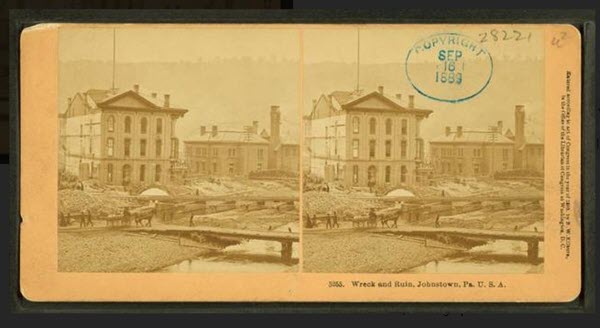
Famous for a flood: “Wreck and Ruin, Johnstown, PA U.S.A.” Kilburn Brothers, Photographer (Public Domain)
What was going on here? The brick wall I was hoping to scale was turning into genealogical quicksand!”
WWLLD Leads to 4 Actionable Steps
“So, in the spirit of WWLLD (“What Would Lisa Louise Do?”), I countered that confusion with the following actions!!
1. Created a private family tree on Ancestry for Caroline (Editor’s note: an idea discussed in episode #229) and her descendants and conducted records searches, which provided clues:
-
-
Two of Caroline’s children were listed as being born in “Hungary” which is something I’ve often seen in my early research (for years, I thought I was Hungarian!)
-
Another child was born in Johnstown in 1888. Besides the Johnstown connection, this was significant since my great-grandparents briefly lived in Johnstown during that same time period before returning to Slovakia.
-
The obituary of another child mentioned that she was buried in a Greek Catholic cemetery in Syracuse. This was also significant since, at that time, Rusyns were usually members of the Byzantine (Greek Catholic) church.
2. Used triangulation to validate that all of these “Caroline” matches belonged to my paternal grandfather’s family.
3. Reached out to the DNA matches (heard from just one person who had no information about Caroline).
4. Also used Ancestry’s “Predicted relationship” tool, which showed that these matches and I shared the same gr-gr-great grandparents.
All signs pointed to Caroline being the sister of my paternal great-grandfather, Andreas. But the records for my great-grandfather’s siblings listed Maria, Anna, Anna, Anna, Anna, Elizabeta, George, and Adam. (Yes, there were four different Anna’s among those siblings!). No Caroline to be found there.
I took a closer look at those records though and found that Elizabeta was born the same year as “Caroline” (1859) and later married Joannes Fecko (which sounds somewhat like John Frisco). This is where my intuition kicked in and said I’d found them!
Still, I wanted to be sure, and consulted with a cousin who’s an expert on our Rusyn ancestors. Having traveled back and forth to our ancestral home village, Olsavica, Slovakia many times, cousin Dave has collected lots of records throughout the years. (Most of these records are unavailable online).
Dave reviewed these records against my research and found the marriage for Elizabeta and Joannes. He further found the birth records for two children who were born in Olsavica. The names and birthdates of these children exactly matched the records for the children I’d located.
He concluded that Elizabeta and Joannes immigrated to America in the late 1880s and would have been among the first immigrants from Olsavica to venture to the USA.
He further theorized that, after my great-grandparents returned to Olsavica, Elizabeta and Joannes may have decided to adapt to America ways quicker than they would have otherwise to survive, thus adopting names that (to them) sounded more American.
So, Elizabeta became Caroline and similarly, her husband, Joannes Fecko, became John Frisco! Also, since Elizabeta and Joannes were living in Johnstown during the great flood of 1889, that might have inspired them to relocate to Syracuse.
I can only say WHEW!
This is the first time I’ve run into this type of name switching in my ancestral research!
In tandem, I wonder if any living Frisco cousins grew up thinking they had Italian ancestry –and are puzzled as to why this isn’t showing up in their Ancestry DNA results!
Should I ever establish/reestablish contact with any of them, I’m sure they’ll be surprised as well!
I didn’t realize how much knowledge I’d absorbed (actively or even passively) from listening to your podcasts, watching your videos, and reading your articles. But whenever I hit a roadblock, I always had another tool I could pull out, e.g., Hit a dead-end with records? No problem, just study the DNA matches (editor’s note: as we discuss in many Premium videos and podcast episodes like Episode #197.) When that stops working, look at newspapers and Google Books! I had it covered!
(Editor’s note: Here’s a listing of all our articles on Newspaper research. Genealogy Gems Premium eLearning members can watch the full length video class Google Books: The Tool You Should Use Every Day here.)
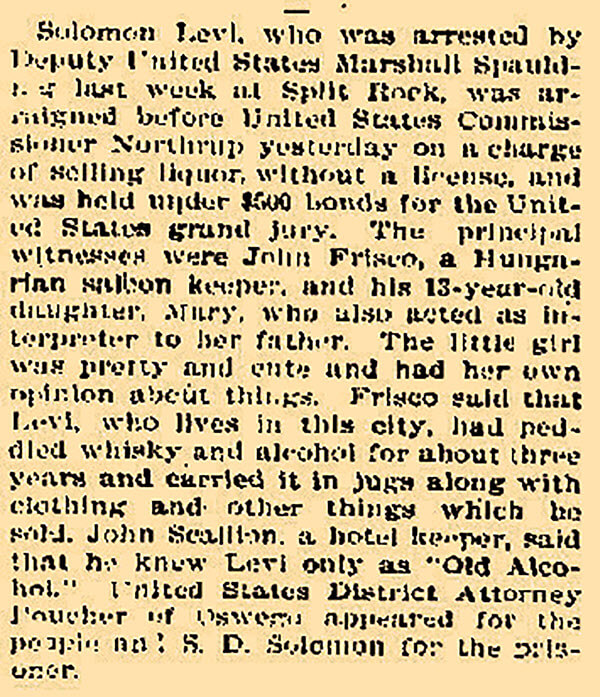
Newspaper found! “Solomon Levi, who was arrested by Deputy United States Marshall Spaulding last week at Split Rock, was arraigned before United States Commissioner Northrup yesterday on a charge of selling liquor without a license, and was held under $500 bonds for the United States grand jury. The principal witnesses were John Frisco, a Hungarian saloon keeper, and his 13-year-old daughter, Mary, who also acted as interpreter to her father. The little girl was pretty and cute and her had own opinion about things. Frisco said that Levi, who lives in this city, had peddled whiskey and alcohol for about three years and carried it in jugs along with clothing and other things which he sold. John Scallion, a hotel keeper, said that he knew Levi as “Old Alcohol,” United States District Attorney (illegible) of Oswego appeared for the people as: S.D. Solon for the (illegible).” January 16, 1896. The Syracuse Standard.
Although I didn’t get this written until (now), rest assured that I thought of each of you at Genealogy Gems and was so grateful!
Thank you for helping me place my Great-Aunt, Elizabeta/Caroline and her descendants in their rightful place in our family tree!! It’s quite a story and I couldn’t have cracked that wall without you.
Thanks for the continual inspiration. I swear my IQ has gone up several points since I began listening to GG!
With gratitude, Natalie Zett”
Share Your Story
Reading the challenges faced and strategies used by other researchers can help to reinvigorate our own genealogical search. Thank you to Natalie for taking the time to write and for providing permission to share her story.
Have you made an exciting discovery thanks to something you heard on the Genealogy Gems Podcast? Please leave a comment below!
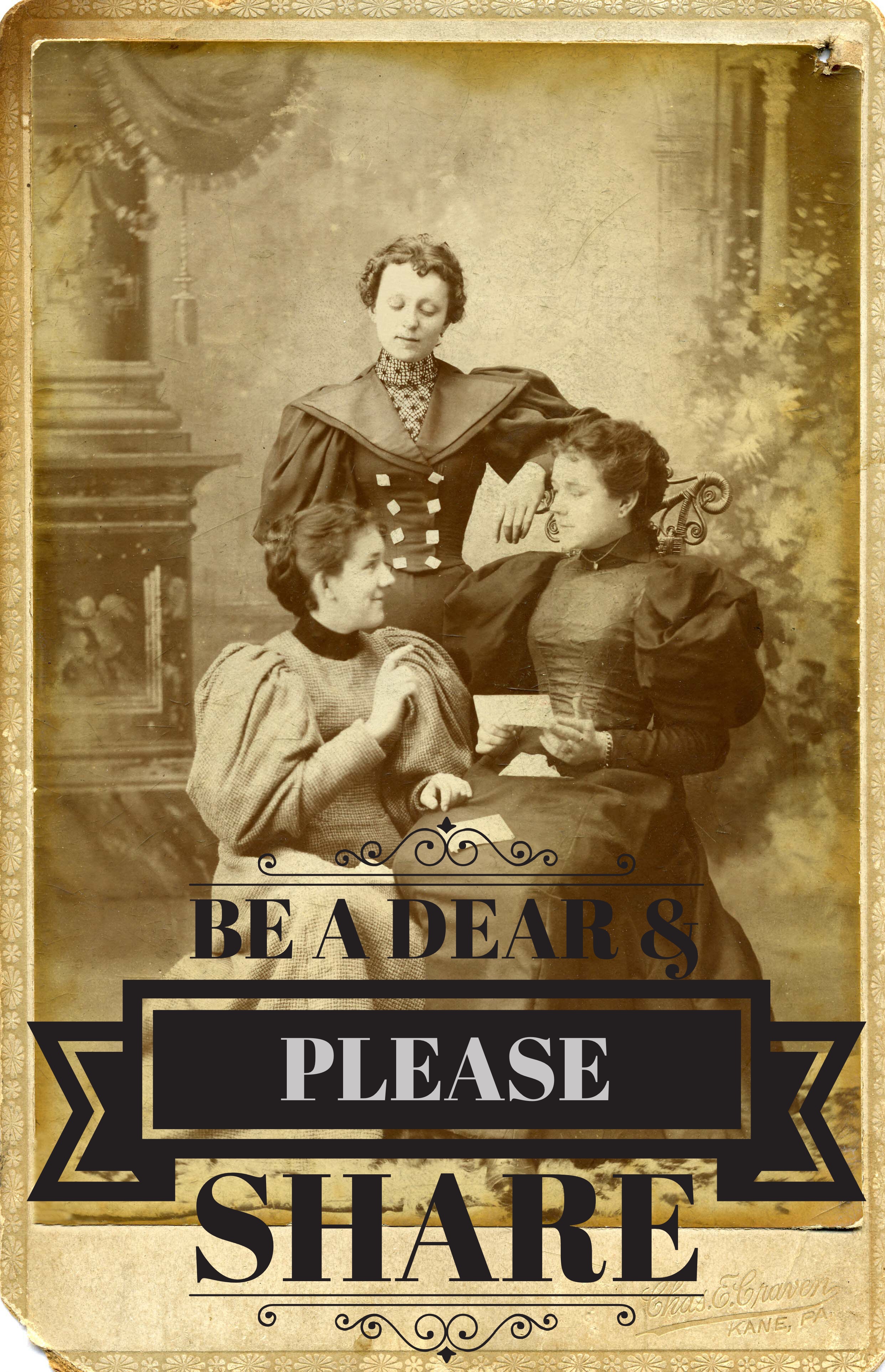
 Every year people ask me for great genealogy gift ideas, so this year I’m counting down to the holidays by sharing my own holiday list (in addition to the Black Friday specials announced yesterday). Every day for the next week I’ll post my top picks on several topics: The Essentials, Genealogy On-the-Go, Get Geeky, Get Organized and Find Everything, Heritage Home Decor and Genealogy Entertainment. I hope you’ll find some inspiration here, either for gift-giving or for things Santa might bring you.
Every year people ask me for great genealogy gift ideas, so this year I’m counting down to the holidays by sharing my own holiday list (in addition to the Black Friday specials announced yesterday). Every day for the next week I’ll post my top picks on several topics: The Essentials, Genealogy On-the-Go, Get Geeky, Get Organized and Find Everything, Heritage Home Decor and Genealogy Entertainment. I hope you’ll find some inspiration here, either for gift-giving or for things Santa might bring you. Online family tree services are great, but I’m a big fan of keeping your master family tree in software on your own computer. This makes updates and backups easier and leaves your important data in your control. RootsMagic 6 Family Tree Genealogy Software / Book Bundle
Online family tree services are great, but I’m a big fan of keeping your master family tree in software on your own computer. This makes updates and backups easier and leaves your important data in your control. RootsMagic 6 Family Tree Genealogy Software / Book Bundle is award-winning family tree software that I just love. It’s more than just a tool for organizing family tree data and sources, which are essential. RootsMagic also has powerful tools to help you share your research with others: tools for charts, reports and even your own book or e-book. Version 6 is for Windows 8/7/Vista/XP and 2000.
 I’ve heard Evidence Explained:Citing History Sources from Artifacts to Cyberspace 2nd Edition
I’ve heard Evidence Explained:Citing History Sources from Artifacts to Cyberspace 2nd Edition described as the “genealogist’s bible.” It’s certainly one of the most important reference books you can have on your shelf. The opening chapters, “Fundamentals of Evidence Analysis” and “Fundamentals of Citation,” are a must-read periodically for genealogists who want to really understand how to interpret and cite sources. The rest of her book is a style manual to help readers cite every detail of a source in the right format. 885 page. PRICE: $59.95. Love the idea but overwhelmed by the length and price? Try her smaller-scale book, Evidence! Citation & Analysis for the Family Historian
 The Genealogy Gems Premium Membership is possibly the best (and most fun!) bargain around for fun, up-to-date genealogy education, as I hope you Premium Members out there are already aware. This membership gives you Genealogy Gems Premium Podcast episodes with exclusive interviews, tips and content; unlimited access to the Genealogy Gems podcast archive with hundreds of hours of programming; and video classes on my most popular topics like Evernote, Google Earth for Genealogy, Google search strategies, organizing your research and more. PRICE: $29.95. Between Black Friday (11/29/13) and Cyber Monday (12/2/2013) you’ll get a bonus ebook!
The Genealogy Gems Premium Membership is possibly the best (and most fun!) bargain around for fun, up-to-date genealogy education, as I hope you Premium Members out there are already aware. This membership gives you Genealogy Gems Premium Podcast episodes with exclusive interviews, tips and content; unlimited access to the Genealogy Gems podcast archive with hundreds of hours of programming; and video classes on my most popular topics like Evernote, Google Earth for Genealogy, Google search strategies, organizing your research and more. PRICE: $29.95. Between Black Friday (11/29/13) and Cyber Monday (12/2/2013) you’ll get a bonus ebook!




 recommend blogs to my readers because they are quicker and easier to set up, but in reality I would rather recommend they create a family history website like you are doing. It’s better suited for the long haul of getting your word out and connecting with others.
recommend blogs to my readers because they are quicker and easier to set up, but in reality I would rather recommend they create a family history website like you are doing. It’s better suited for the long haul of getting your word out and connecting with others.

